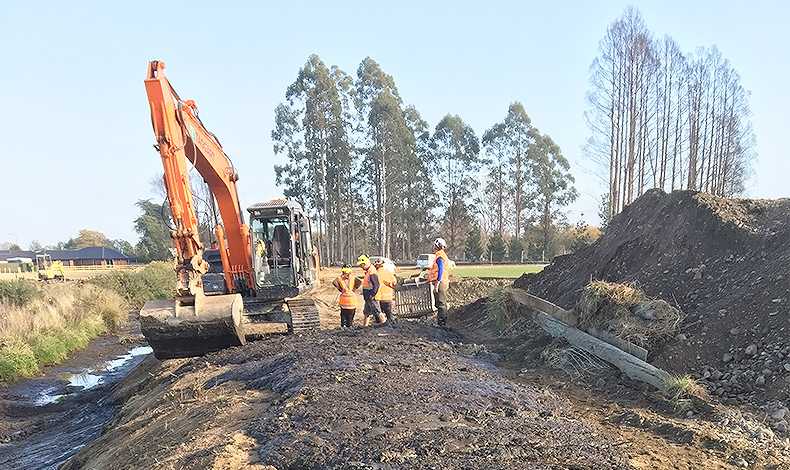Creating a National Works in Waterways Guideline
14 July 2020
Councils, consultants and contractors are working together to create a best-practice guideline for working in freshwater environments.

Why is this guideline needed?
New Zealand’s freshwater environments are under immense pressure, with declining water quality and quantity, continued degradation of habitat conditions, loss of critical habitats for freshwater fauna, barriers to fish passage, and pressures from invasive species.
These pressures are impacting the health of our waterways and the conservation, recreation, cultural and social values they bring. Degraded water quality, quantity and habitat conditions, loss of critical habitats (e.g. spawning habitat) and barriers to fish passage continue to present management challenges when balancing the need to protect freshwater fauna and their recreational and cultural values with providing for development.
In New Zealand, works in waterways (e.g. diversions; building bridges, culverts, other structures; drain clearance, maintenance work, stormwater clearance; dredging) are managed through regional plans and guidance documents, and via project-specific advice from independent ecologists. Regional councils must define rules, regulate activities and tell users of freshwater environments what they can, and cannot, do. However, few councils go as far as guiding users on appropriate controls to avoid or minimise adverse effects on water quality, quantity, habitat and fauna when working in waterways.
Moreover, it is usually the responsibility of an applicant to provide a methodology for works in waterways which includes measures to manage potential adverse effects. But the lack of consistent direction has sometimes led to poor outcomes.
Inconsistencies across regions and measures employed by end users (e.g. contractors, private landowners, city and district councils), and no policy at a national level, means there’s no way to ensure best practice for works in waterways.
This lack of consistency has sometimes led to poor environmental outcomes.
The guideline will assist decision makers, applicants, contractors and/or persons undertaking the work, making the consenting process more streamlined, consistent and transparent and ultimately providing for better environmental and ecological outcomes.
What will the guideline do?
The guideline aims to set the bar for best practice for works in and adjacent to waterways, providing a clear and consistent approach for councils, government agencies, and construction firms to adhere to. The guideline will assist decision makers, applicants, contractors and/or persons undertaking the work, making the consenting process more streamlined, consistent and transparent and ultimately providing for better environmental and ecological outcomes.
The guideline will:
- Provide a consistent level of practice for councils, government agencies, and construction firms / persons undertaking the work to adhere to.
- Clearly outline what steps need to be followed in undertaking works in waterways.
- Result in improved outcomes for biodiversity in our waterways.
- Enable councils and applicants to meet legislative requirements.
Who is working on this?
Boffa Miskell met with a group of representatives from councils, government agencies, consultancies and contractors in November 2019¹ to discuss whether there was a need for national guidance on ‘best practice’ for works in waterways and what this would look like. There was a consensus that a consistent approach would be beneficial to applicants, regional councils and the environment.
Several of these stakeholders² are continuing to work together to develop robust, comprehensive and fit-for-purpose National Works in Waterways Guideline. However, we know that to be successful this needs a multi-agency and collaborative approach, bringing together those who are active throughout New Zealand in the policy, planning and implementation of this space.
We are seeking support from partners, peer-reviewers and technical experts.
If you would like to be involved in one of our stakeholder groups, or would like more information, please get in touch with Tanya Blakely from Boffa Miskell.

